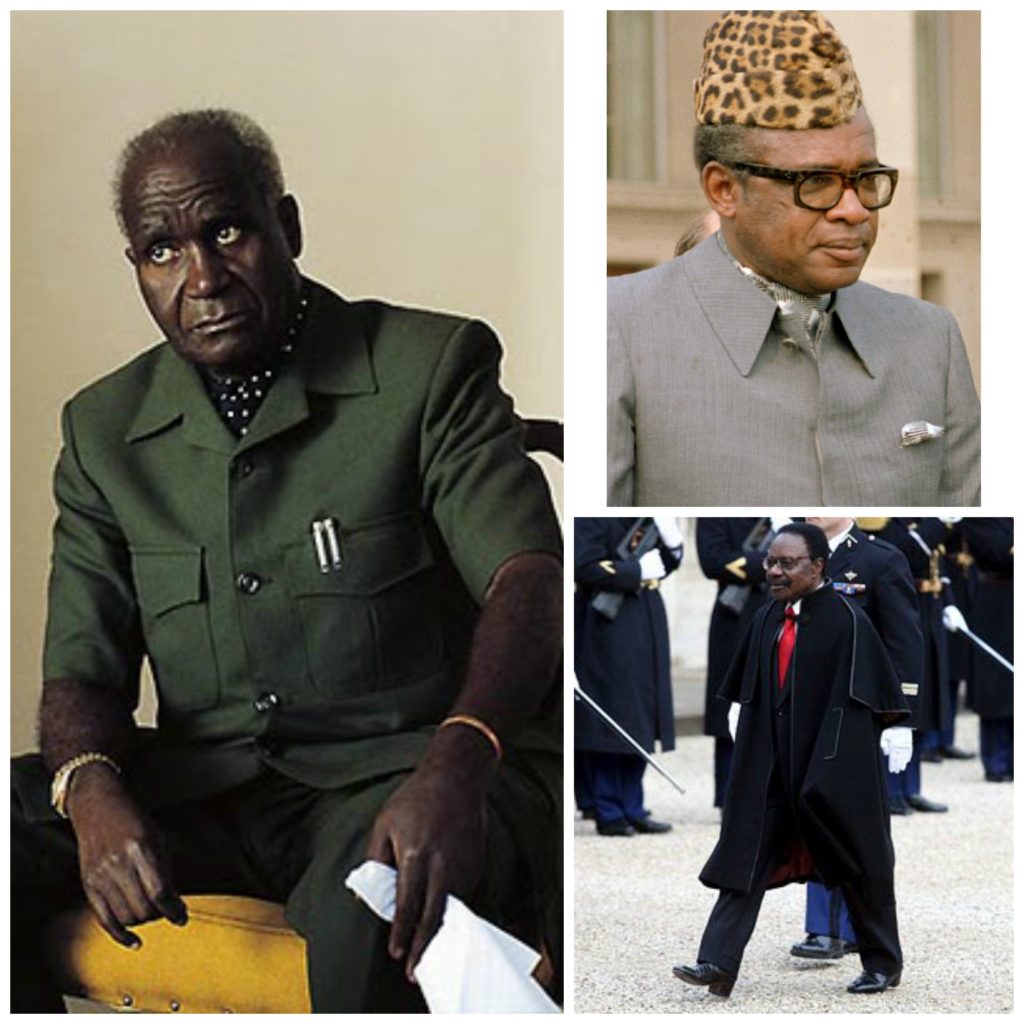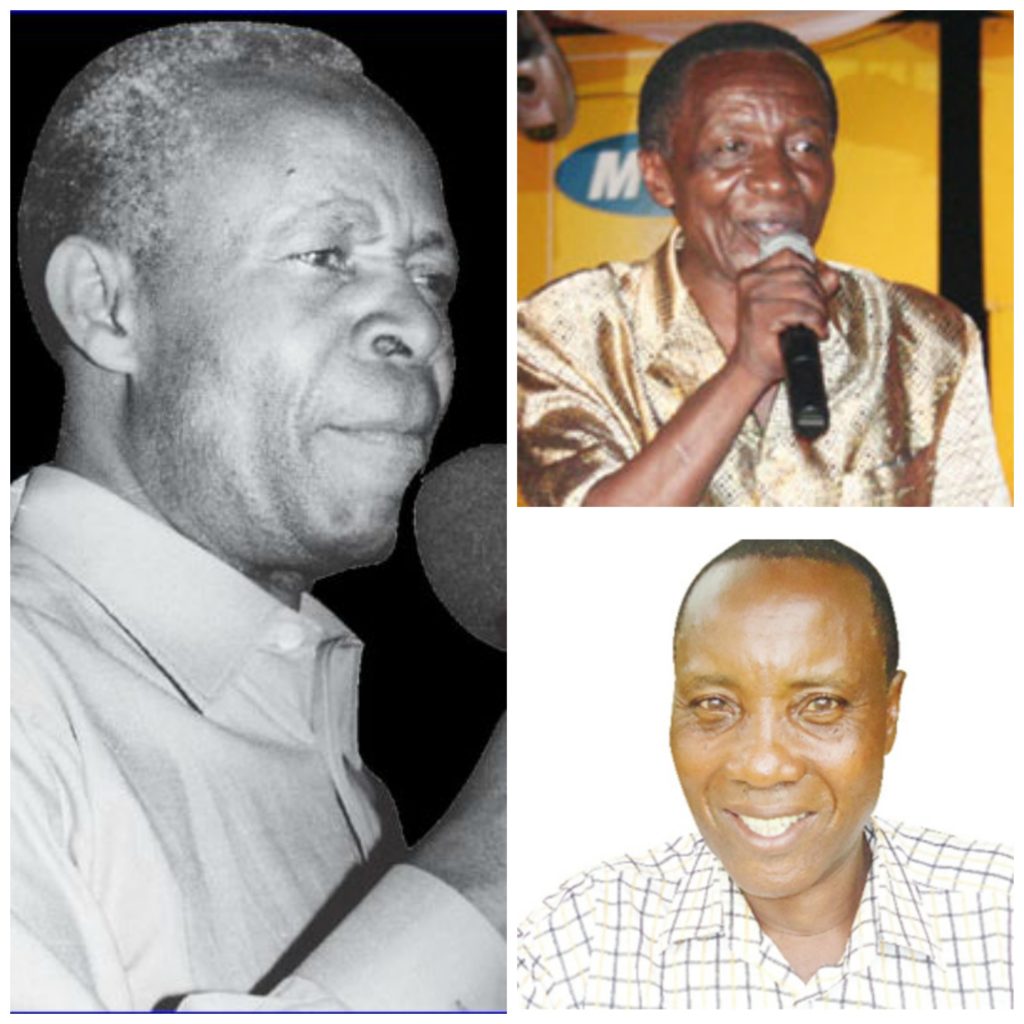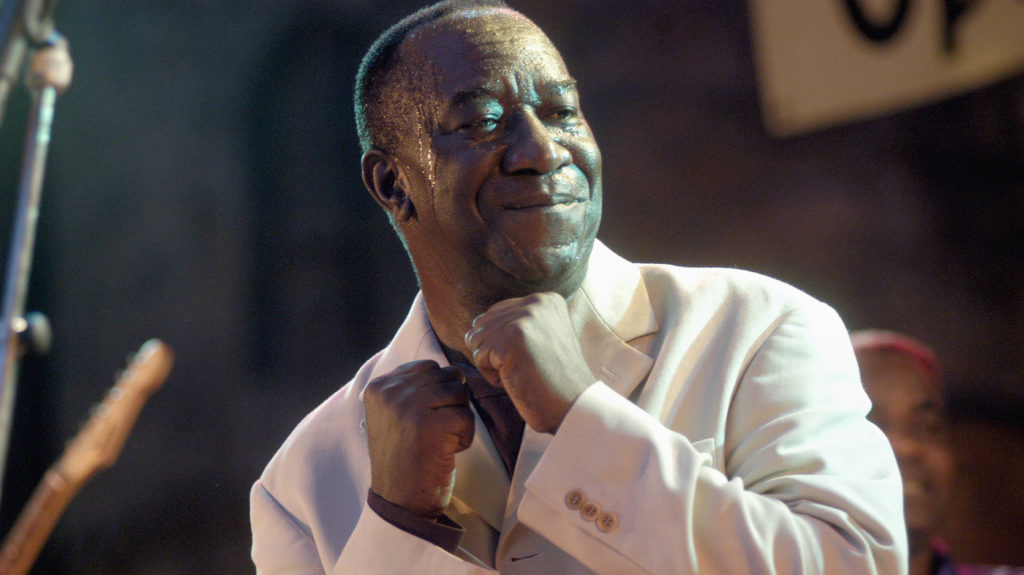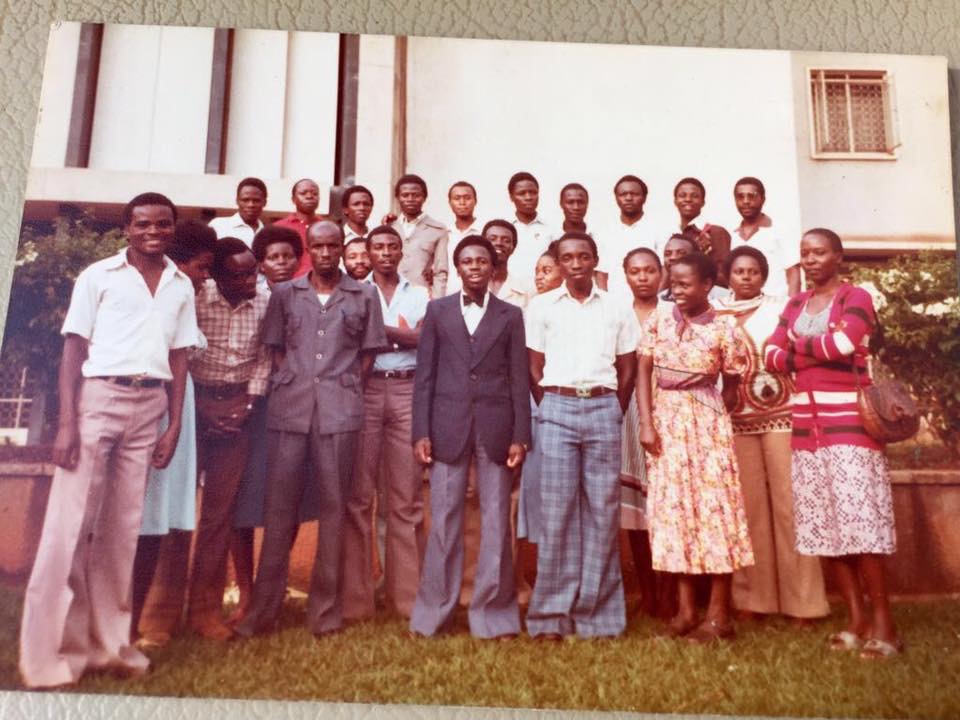Presidents as Role Models

Despite having Idi Amin as President of Uganda with a global economic embargo causing a shortage of basic necessities like sugar, soap, salt, paraffin, rice, bread, margarine, we as teenagers tried to enjoy life as best as we could.
The fashion trendsetters for us were not celebrities but politicians! It started with President Kenneth Kaunda of Zambia coming up with the Kaunda suit that had a short-sleeved jacket with no inside lining, worn over trousers. However, since Idi Amin was not on friendly terms with Kaunda, (because he was friends with President Milton Obote who Amin had overthrown) the more prominent men’s clothes model was President Mobutu Sese Seko of neighboring Zaire (now renamed Democratic Republic of Congo) who came up with a long sleeved version of the Kaunda suit with large collars and a scarf worn inside the collar.
However the mightiest trendsetter in Uganda was Amin’s friend, President Omar Bongo of Gabon who loved bell-bottomed trousers worn on huge platform shoes that in Uganda were named Bongos. No young man who wanted to be seen as fashionable and modern missed bell-bottomed trousers and platform shoes.
Fast changing technology in music
The 1970s witnessed drastic changes in music production and presentation technology. We started with the gramophone that used a hand-wound clockwork that would slowly unwind to play music on a vinyl record disk with grooves amplified by a needle. Each winding played about two songs and the dancers had to wait while the gramophone was wound up again.
This was quickly and unceremoniously replaced by the record player that played similar vinyl records but this time using portable batteries that we called “dry cells”. An improvement was that bigger disks called albums could have as many as six to eight songs on side A and another six to eight songs on side B. One needed some really good money to own a record player and we looked with awe and admiration at the few people that owned them.
Before the close of the 1970’s the cassette player, that used cassette tapes that could play music for 30 minutes one side before you manually turned it over for another 30 minutes, became popular and affordable. These were much cheaper than the record player and in 1979 when I got my first university allowance, top on my shopping list was a small portable radio cassette and a number of music cassettes.
Popular Ugandan music

Left: Elly Wamala Top Right: Fred Masagazi Bottom Right: Dan Mugula
The most popular Ugandan music we loved to listen to and dance to was Luganda music by artists like Frida Ssonko with Olupapula Si Mupiira, Christopher Sebadduka with Tereza, Elly Wamala with Ani Yali Amanyi, and Dan Mugula with Enkomelelo.
The jukebox, where one could put coins and select music to be played, was nicknamed “Wambuza” (You Asked Me) because it could play your request. It was also named after the same popular song by Frida Ssonko. Its lyrics were “Wambuza oba nga kwagala…amazima nkwagala era gwe namba emu” (You asked me whether I love you. Its true, I love you. You are my number 1).
Popular East African music

Congolese music was all the rage in Uganda in the 1970’s. Soukous maestro Franco (François Luambo Luanzo Makiadi) of TP OK Jazz belted out hit after hit that we danced to. This was closely followed by Tabu Ley Rochereau of African Fiesta.
Swahili music played by Congolese bands or Kenyan and Tanzanian bands influenced by Soukous music was very popular. Hits like Shauri Yako by Orchestra Super Mazembe and Kasongo (Yeye mobali nanga) ; and Sina Makosa by Les Wanyika were very, very popular dance hits.
English music popular in Uganda
As teenagers, we absolutely loved and danced waltz to American country musician Jim Reeves’s romantic and spiritual music. His rich baritone voice set our blood boiling as we listened to songs like Have I told you lately that I love you, Distant Drums (I hear the sound of distant drums); Don’t let me cross over, Adios amigo, Adios my friend and This world is not my home.
We also loved Jamaican reggae music by musicians like Jimmy Cliff with inspiration danceable beats and meaningful melodies like: Wonderful world, beautiful people, Many rivers to cross, You can get it if you really want, and The harder they come, the harder they fall.
As the 1970s came to a close we discovered and fell in love with the Swedish music group , Abba with soulful songs like : Waterloo, Honey Honey, “I do, I do, I do, Mamma Mia, Fernando, Dancing Queen, Take a chance on me, Voulez Vous, Chiquita and Money, money money, it’s a rich mans’s world.
We were also absolutely crazy with the German based Jamaican group Boney M with songs like: Daddy Cool, Ma Baker, Rivers of Babylon, Mary’s boy child, Hooray, Hooray, it’s a holiday.
The writer, Robby Muhumuza, was a teenager in the 70’s.

#MyFlameMySong is a series inspired by Philippa Namutebi Kabali-Kagwa’s heart-warming memoir, Flame And Song.
Do you ever wonder what life was like before 1980 in Uganda? What made people laugh, dance, cry, wail, whisper, giggle? What did they wear? Where did they party? Did they even party?
We’re looking for short stories of Uganda before 1980. Send in your stories. Talk to your parents. Interview your grandparents. Share your own story. Share your photographs. We want to archive our lives!
Send stories and photos to kaboozi@somanystories.ug
